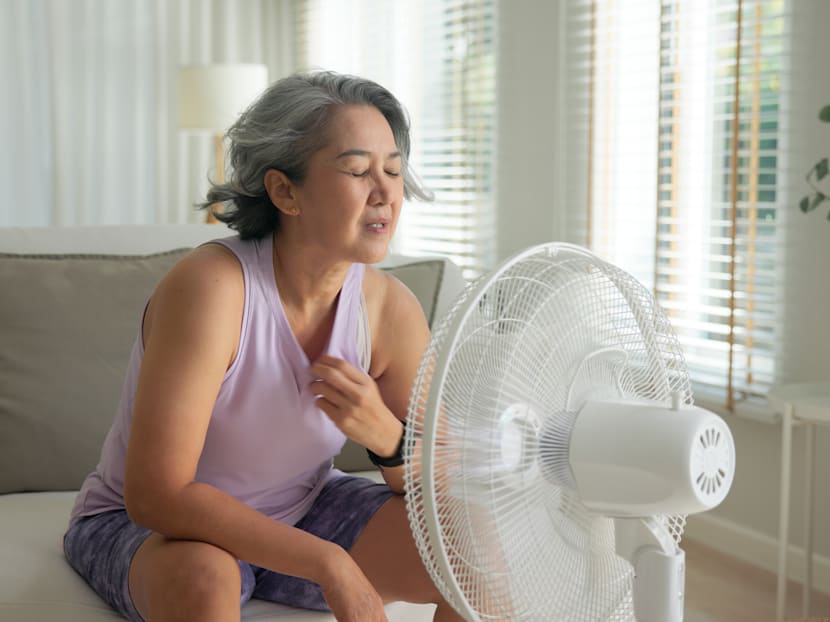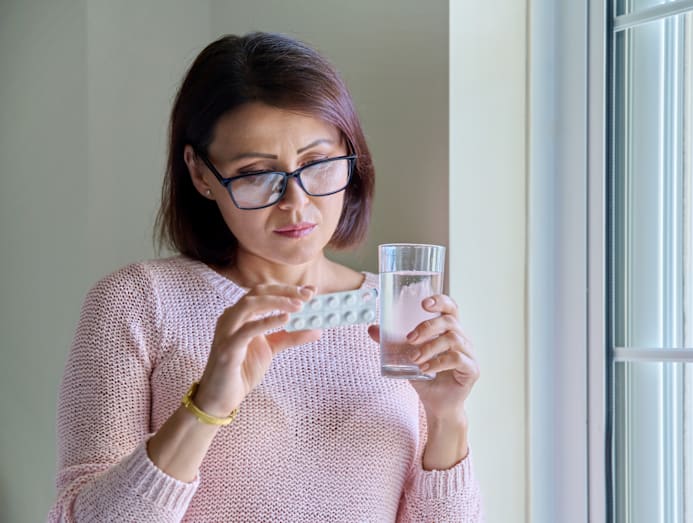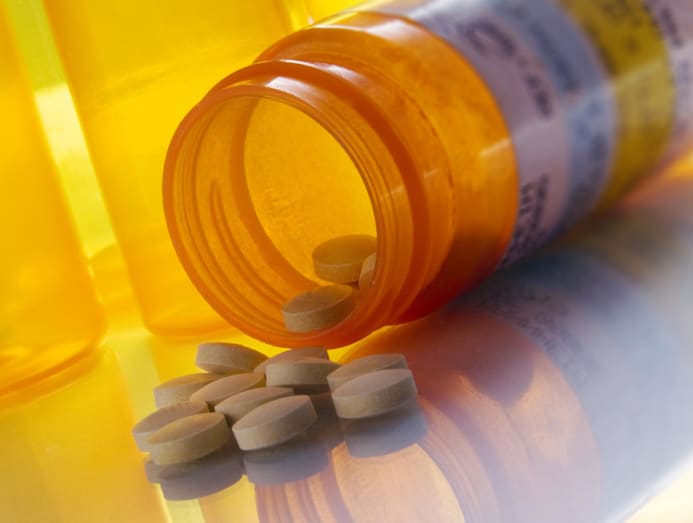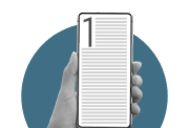How menopause treatments evolved from horse urine to a new non-hormonal drug that targets hot flashes
Did you know that oestrogen has been used to treat menopausal symptoms since 1928? Now, there’s a new non-hormonal alternative and even the off-label use of medicines for hypertension, depression, epilepsy and hyperactive bladders to consider. CNA Women takes a look at how menopause treatment has evolved.

(Photo: iStock/Chay Tee)

This audio is generated by an AI tool.
It has been more than 200 years since French physician Charles-Pierre-Louis de Gardanne put together the Greek words “men” (meaning month) and “pausis” (meaning cessation) to coin the term “menopause” in 1821. Back then, no one understood why women stopped menstruating permanently any more than they knew how diseases were transmitted.
That is, until French physiologist Claude Bernard, in the mid-1850s, discovered that certain internal glands secreted substances that could affect the body’s organs. That led to the discovery of hormones, which then led to one big step for womankind – the beginning of hormonal therapy.
IT BEGAN WITH HUMAN PLACENTAS AND HORSE URINE
Researchers in the late 1800s had already determined that the missing piece to the menopause puzzle was hormones. But getting there took experiments on both humans and animals, and involved eating powdered bovine ovaries, and injecting extractions of guinea pig and dog testicles into people.
One of the very early forms of hormonal therapy was an oestrogen patch in 1928. Still, it was nothing fancy, likely an ointment applied on a basic adhesive – unlike the controlled-release transdermal patches we have today.
In 1934, the first oral oestrogen pill Emmenin (not to be confused with the rapper), was approved by the United States Food And Drug Administration (FDA). The tablets were made from human placentas and later, human urine. It contained natural, bioidentical oestrogens.
IS IT HRT OR MHT?
Menopausal hormone therapy (MHT) is the current preferred term when referring to the treatment of menopausal symptoms. Hormone replacement therapy (HRT or HT) is deemed a broader term that encompasses any health situation where the hormone levels are low and need replacing, regardless of the cause.
Hormonal therapy became more accessible in 1942 when scientists found ways to extract oestrogen from a more abundant and cheaper source: Pregnant mares’ urine. No prizes for guessing why they named it Premarin. Unlike Emmenin, it contains conjugated oestrogens or a mix of oestrogen compounds.
Four years on, a vaginal cream version of Premarin was introduced to target vaginal dryness and discomfort. Both the oral and cream versions are still made from horse urine, although its exact formula is a trade secret.
As early as the 60s, it was accepted for women to seek relief from symptoms such as hot flashes, night sweats and vaginal dryness in little tablets – at least in the US. Not only that, hormonal therapy also sold the promise of chronic illness prevention and a safeguard against heart disease. Throw in the appeal of the proverbial “fountain of youth” in a bottle, and sales of conjugated oestrogens skyrocketed.
Of course, conjugated oestrogens weren’t the only form of hormonal therapy available then, even in Singapore. “Localised oestrogen (applied directly on the vaginal area) was first used in Singapore around the 70s,” said Associate Professor Yong Tze Tein, a senior consultant with Singapore General Hospital’s (SGH) Department of Obstetrics and Gynaecology. “Estradiol (the most active type of oestrogen) was introduced in the 80s; the tablet and cream forms are most widely accepted in Singapore.”

According to Assoc Prof Yong, local oestrogen is supposedly the “safest” as “very little of the hormone is absorbed into the bloodstream and it has been shown not to cause breast cancer”.
Dr Anthony Siow, Gleneagles Hospital’s obstetrician and gynaecologist, agreed. “There is now a movement to get the FDA to change the side effects or risk warning information that comes with low-dose vaginal oestrogen.”
THE BIG SCARE
It wasn’t all uptrending for hormones through the ages; they were briefly panned in the 70s when studies linking oestrogen-only therapy to an increased risk of endometrial cancer were published.
The biggest controversy that came after were the results of the Women’s Health Initiative (WHI), the landmark 2002 US study that linked hormone use to breast cancer and heart disease – and still has ripple effects today on women’s perception of hormonal therapy.
The 15-year-long endeavour was a massive undertaking, enrolling more than 160,000 post-menopausal women in total between 50 and 79 years old in the US. The purpose: Figure out how to beat cardiovascular disease, cancer and osteoporosis – the leading causes of death post-menopause.
When the results were released, women everywhere threw out their hormone tablets when they read that a combination therapy with oestrogen and progestin showed an increased risk of heart disease and breast cancer. Oestrogen alone wasn’t any better; it was linked to an increased risk of stroke and blood clots.
ARE HORMONES MALIGNED?
Local experts that CNA Women spoke to say that while the WHI is a landmark study given its scale, its results are flawed in a few ways.
“The study made generalisation of risks across all age groups, irrespective of how long women have been through menopause,” said Dr Carmen Gan, an obstetrics and gynaecology specialist, and a consultant at Raffles Women’s Centre. For instance, women actually had a lower risk of heart disease when they started on menopausal hormone therapy (MHT) before the age of 60, she said, citing a 2006 meta-analysis.
Dr Siow pointed out another oversight from the WHI study. “Thirty per cent of the participants were already hypertensive and 50 per cent of them were ex-smokers. So really, it wasn’t a surprise that hormones, introduced at a later age to not-so-healthy women, would cause heart disease rather than prevent it.”
Oral MHT can increase the risk of blood clots, which are big factors for heart disease. These days, doctors mitigate the risk by by assessing the patient’s baseline cardiovascular risk factors. Low-oestrogen transdermal MHT is also favoured over oral MHT.
As for breast cancer, “it is now generally accepted that the WHI study overestimated the risks, and there have been updates to the original cohort published after in 2018,” said senior consultant Dr Lisa Webber from SGH’s Department of Obstetrics and Gynaecology. “MHT is the most effective treatment for menopausal symptoms and the absolute increase in risk of breast cancer is very small.”

HORMONES NOT INCLUDED BUT…
Of course, MHT isn’t entirely without its downsides, especially for women with a history of hormone-dependent breast cancer, stroke or heart disease. It may also not appeal to those who aren’t convinced about the safety of hormone use.
Enter non-hormonal medications such as elinzanetant and fezolinetant, which are the latest medications designed specifically to target vasomotor symptoms caused by menopause – hot flashes and night sweats.
But even before their arrival, other medications were already prescribed by doctors for their unintended secondary ability (also known as off-label use) to temper the same vasomotor symptoms. These “licensed drugs can be prescribed if the doctor explains why it’s being used for an unlicensed indication and the patient accepts the reasons”, said Dr Webber.
For instance, “gabapentin is licensed for epilepsy and neuropathic pain; oxybutynin to treat an overactive bladder; and paroxetine for major depressive disorder, premenstrual dysphoric disorder, and social phobia”, she said.
HOW ASIAN WOMEN VIEW HORMONES AND SEX
Very few women in Singapore are on MHT to manage their menopausal symptoms – less than 2 per cent, said Associate Professor Yong Tze Tein, a senior consultant with Singapore General Hospital’s (SGH) Department of Obstetrics and Gynaecology. These could be the reasons:
- Repercussions of the 2002 US Women’s Health Initiative (WHI)
Hormone replacement therapy and hormones developed “exaggerated negative connotations” after the WHI study, said Assoc Prof Yong. “This fear also runs amongst healthcare professionals, especially those who do not treat menopausal symptoms often, and may not be up to date with the latest evidence.”
Dr Carmen Gan, an obstetrics and gynaecology specialist, and a consultant at Raffles Women’s Centre was also personally affected by the misconceptions. “When I was growing up, my mother used to tell me to avoid hormones as they can cause cancer and are generally regarded as bad,” she said. “Until I became a gynaecologist, I had always told myself to avoid all hormones as a result.”
- MHT medications don’t quite fit Asian women’s needs
MHT typically targets vasomotor symptoms such as hot flashes and night sweats. Comparatively, “the top five menopausal symptoms [in Singapore] were joint and muscle discomfort, sleep problems, vaginal dryness, physical and mental exhaustion, and hot flashes,” said Dr Lisa Webber from SGH’s Department of Obstetrics and Gynaecology, citing a National University Hospital Singapore study involving 1,054 women from ages 45 to 69.
- Sexual symptoms may be under-reported
Cultural norms, especially for women born in the 70s or earlier, may have led to the under-reporting of sexual symptoms such as vaginal dryness.
Dr Anthony Siow, Gleneagles Hospital’s obstetrician and gynaecologist, said that when he suggests the use of local oestrogen during sex to reduce vaginal dryness, he is often met with comments such as “completed family already, no need sex” and “so old already, still want sex?”.
- Too busy to get treatment
The average age of menopause onset is 49, a time when many women are still too busy working or caring for families to consider hormonal therapy, Dr Siow observed. Those who do see a specialist – and maybe consider MHT – do so only if they get the correct information.
However, it is important to note that these medications, including the newest FDA-approved elinzanetant for vasomotor symptoms, have not been registered with Singapore’s Health Sciences Authority (HSA) for menopausal symptoms, said a HSA spokesperson.
Even though hot flashes and night sweats may be less commonly experienced among Asian women than those in the west, it is worth speaking to your doctor about the following non-hormonal alternatives if you are bothered by those symptoms.
Fezolinetant and elinzanetant
- Intended uses: Both fezolinetant and elinzanetant are neurokinin receptor antagonists that block specific neurokinin receptors in the brain. They are designed specifically for moderate to severe vasomotor symptoms associated with menopause.
- On menopause symptoms: Normally, oestrogen inhibits the signalling of neurokinin receptors, which when unchallenged, can cause the hypothalamus, the brain’s temperature-control centre, to go haywire. That’s what happens during menopause when oestrogen levels drop. Using elinzanetant or fezolinetant blocks the signalling and switches off the furnace.
Elinzanetant blocks two neurokinin receptors, while fezolinetant works on only one. “It is not clear if one is better than the other in terms of controlling vasomotor symptoms or side effects. Elinzanetant may have a quicker onset, and provide greater benefit for sleep, but may cause headaches,” said Dr Webber.
Fezolinetant has been approved by the HSA since April 2025, while elinzanetant, which very recently got the green light from the FDA in October, is not.

Paroxetine
- Intended use: Paroxetine belongs to the class of antidepressants known as selective serotonin reuptake inhibitors (SSRI). They work by preventing the body’s natural re-uptake of serotonin, the feel-good chemical, to improve mood.
- On menopausal symptoms: Having more serotonin in the brain inhibits the levels of norepinephrine, a neurotransmitter that can trigger hot flashes and night sweats.
“SSRIs are safer in terms of breast cancer risks but they also have their side effects,” said Assoc Prof Yong, citing nausea, sleep and sexual problems, and weight changes. “They are not as effective and they don’t address other menopausal symptoms like vaginal dryness,” he added.
Also, some women may not like the idea of seeing a psychiatrist. In Singapore, said Dr Siow, gynaecologists can only prescribe up to two weeks of SSRIs, “so there is a need to refer to a psychiatrist for longer term management”.

Gabapentin
Intended use: It primarily treats nerve pain and epileptic seizures.
On menopausal symptoms: Gabapentin is also thought to widen the “thermoneutral zone” in the hypothalamus. By doing that, it reduces the frequency and severity of the body’s extreme reactions to minor changes in core body temperature during menopause.
Gabapentin is not FDA-approved for hot flashes but some doctors may prescribe it off-label. Clinical studies showed that gabapentin may be less effective than oestrogen therapy. Its most common side effects include drowsiness, dizziness, weight gain and dry mouth.
Oxybutynin
Intended use: Oxybutynin blocks the action of acetylcholine, a neurotransmitter that causes the bladder muscles to contract and brings on the need to pee.
On menopausal symptoms: Acetylcholine is also thought to stimulate the sweat glands. Blocking this neurotransmitter helps to manage the excessive perspiration of hot flushes and night sweats.
Like gabapentin, oxybutynin is sometimes prescribed for its off-label use. The side effects range from dry mouth to headache, dizziness, diarrhoea, constipation and blurred vision.
CNA Women is a section on CNA Lifestyle that seeks to inform, empower and inspire the modern woman. If you have women-related news, issues and ideas to share with us, email CNAWomen [at] mediacorp.com.sg.






